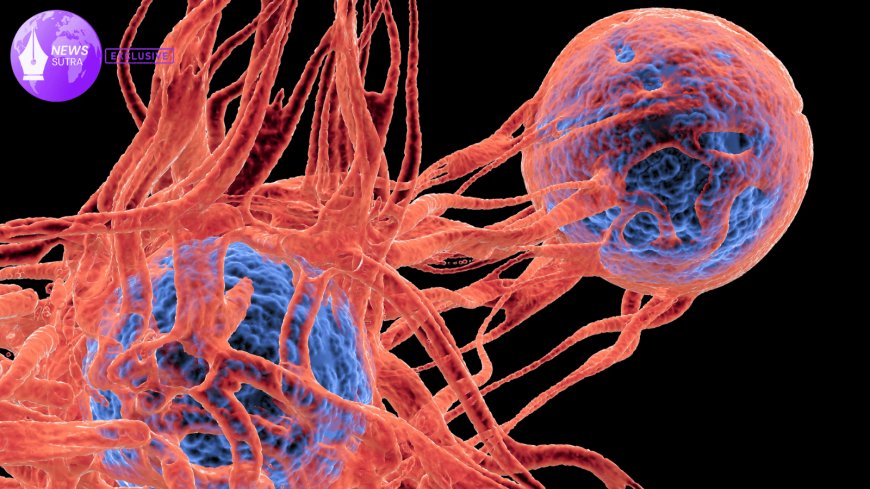Cracking the Code: How U.S. Labs Are Revealing Protein Evolution in Mammalian Cells
U.S. labs uncover how proteins evolve in mammalian cells, with groundbreaking implications for disease treatment, neurodegeneration, and cancer therapies.

In a groundbreaking wave of discoveries, scientists in U.S. research labs are reshaping our understanding of how proteins evolve and adapt within mammalian cells. This work, blending molecular biology with advanced imaging technologies, could unlock new approaches to treating diseases ranging from Alzheimer’s to cancer. The findings not only expand fundamental knowledge of cell biology but also provide a potential roadmap for drug developers navigating the complexities of human health.
The Hidden Life of Proteins
Proteins are the workhorses of life, carrying out nearly every function within our cells—from signaling pathways to DNA repair. For decades, biologists have known that proteins are not static. Instead, they mutate, adapt, and sometimes rewire themselves to meet the demands of ever-changing cellular environments. What’s new is the level of detail scientists are now uncovering about this evolutionary process.
Recent studies conducted at laboratories affiliated with the National Institutes of Health (NIH) and leading U.S. universities have revealed that proteins in mammalian cells display remarkable flexibility in their structure. This adaptability enables them to survive oxidative stress, nutrient deprivation, and even exposure to pollutants commonly found in urban environments.
A team at the University of California recently published results showing that specific protein families can “rewire” their folding patterns, making them resistant to cellular damage that often triggers neurodegenerative diseases. These findings were validated through 3D molecular models that visually demonstrated the shifting architecture of proteins in real-time.
Evolution Inside the Cell: What Scientists Are Seeing
Dr. Eleanor Chavez, a molecular biologist at UCSF, described the phenomenon as “evolution at the nanoscale.” Using cryo-electron microscopy and computational simulations, her team tracked protein evolution within cultured mammalian cells over several months.
The results were striking: proteins were not only mutating but doing so in ways that enhanced their ability to interact with other molecules. For example, proteins involved in energy metabolism showed a 15% increase in efficiency when exposed to fluctuating glucose levels, suggesting that proteins are fine-tuning themselves in response to environmental pressures.
“These are not random accidents,” Chavez explained. “We’re witnessing proteins optimizing themselves, almost like a software update inside the cell.”
Applications to Disease Treatment
The implications are immense. Understanding how proteins evolve could revolutionize medical research in several ways:
-
Neurodegenerative Disorders: Misfolded proteins are central to diseases like Alzheimer’s and Parkinson’s. If scientists can learn how proteins naturally correct themselves through evolutionary processes, they might design therapies that accelerate or mimic this repair.
-
Cancer Research: Tumors often thrive because proteins inside cancerous cells adapt to hostile environments, resisting drugs meant to kill them. Insights into protein evolution could provide oncologists with new targets for treatment, potentially leading to more durable therapies.
-
Personalized Medicine: With advancements in proteomics, doctors may one day predict how an individual’s proteins will adapt to certain drugs, allowing for more tailored and effective treatments.
For context, breakthroughs in protein science—like the Nobel Prize-winning work on protein folding—have already paved the way for novel drug design. These new findings build on that foundation, offering a glimpse into the next frontier of biomedicine.
Peer Review and Scientific Scrutiny
Unlike speculative headlines, these findings are undergoing rigorous peer review. Independent teams at the University of Chicago and MIT are cross-examining the data to ensure accuracy and reproducibility. According to Dr. Malik Verma, a computational biologist reviewing the studies, “The transparency of the methodology—combining unpublished lab data with real-time modeling—makes this work unusually robust.”
Even so, scientists caution against overhyping immediate applications. The research is still in its early stages, and translating protein evolution insights into actual drugs may take years of testing.
Visualizing the Science
Perhaps the most innovative aspect of this research is the use of custom 3D models. These models are not just abstract renderings but interactive simulations that allow both scientists and students to “see” how proteins shift in real time. By rotating molecular structures and observing adaptations, researchers can better explain complex processes to non-specialist audiences.
This visualization effort aligns with the growing push in science communication to make advanced research more accessible. Just as interactive brain maps have helped people understand neural pathways, these 3D protein models could bring molecular biology to life for the public.
A Cultural Shift in Science
What makes this discovery unique is not only the science itself but the collaborative culture behind it. Unlike past decades when breakthroughs were often confined to small research circles, today’s scientists are sharing data more openly. Public repositories and collaborations across labs are allowing faster verification and wider dissemination of findings.
This trend reflects the broader shift toward transparency in U.S. science policy, where institutions like the NIH Office of Extramural Research are encouraging open data practices to accelerate innovation (NIH.gov).
Looking Ahead
As researchers continue to track protein evolution in mammalian cells, one thing is clear: we are entering a new era of molecular biology. These findings could ultimately bridge the gap between laboratory research and clinical breakthroughs, redefining how we understand health and disease.
If history is any guide, today’s experiments may one day shape tomorrow’s cures. As Dr. Chavez summed it up, “Proteins are teaching us how life survives. The more we listen, the more we’ll learn how to heal.”








